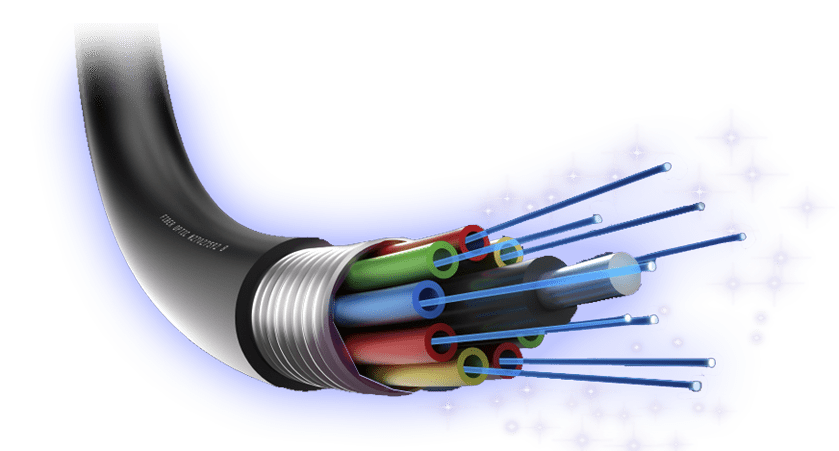Sensing systems based on FBG technology have numerous advantages compared to conventional electrical sensors.
The sensor itself acts as a passive component in the sensing network allowing the integration of the sensing system and sensor even inside explosive environments where any electrical signal or sparking is prohibited.
Fiber optic sensors use light as the signal carrier, rather than electric current as in conventional sensors, which renders them immune to interference from electrostatic, electromagnetic and radio sources. The sensor can also be exposed to extreme temperatures and operate in harsh environments.
Data transfer via fiber optics is already a standard in the telecommunication industry due to its wide broadband, low loss and the ability to carry the signal over long distances without needing an amplifier. Sensing systems based on FBG technology use this reliable medium to carry data acquired from both the sensors and the sensing element. The advantage of combining fiber optic technology with FBG technology is that it provides long term stability to the sensor and removes the need to recalibrate over time. The sensing element in FBG based sensors has very small dimensions and therefore our sensors can be customized and mounted on structures with minimal modification or effect on the structure’s behavior
Electrical sensors require a dedicated channel and cable for each sensor in order to acquire data, leading to very complex solutions when monitoring large structures. With sensors based on FBG technology, multiplexing allows many tens of FBGs to be integrated in a single optical fiber. Each grating can act as an independent sensing element, which greatly simplifies large structure monitoring. This generates significant installation cost and time savings. In addition all of the fibers can be connected to a single read-out unit (FBG interrogator).
An FBG sensing element is capable of measuring strain and temperature. Using different transducer mechanisms they are able to measure several other physical quantities, like; pressure, displacement, force, load, acceleration, inclination, etc.
| FEATURES | FIBRE OPTIC | ELECTRIC |
|---|---|---|
| EM-radiation | Immune | EM-sensitive |
| Lightning / electric discharge | Lightning and discharge proof | May cause damage or complete failure |
| Electric conductivity | Non-conductive and hence no special precautions needed for outdoor use or usage under water | All wiring needs to be hermetically sealed for outdoor use or usage under water |
| Explosion Safety | Spark-free and hence safe in potentially explosive atmospheres | Hazardous in explosive atmospheres |
| Measurement distance | Up to tens of kilometers | Limited in range without any additional amplification |
| Multiplexing | Possible to multiplex, i.e. multiple sensors can be allocated within the same optical fiber | No multiplexing capability in series configuration |
| Weight | Low in weight: fibers are lightweight and number of cables can be limited | Becomes heavy for large numbers of sensors because of the copper wiring |
| Installation and Sensor Read-out | Fast (< 20 ‘ per sensor) Easy (can be done by non-experts; no extra wiring required) | Time consuming (extra wiring) Requires skilled and experienced workers |
| Fatigue resistance | Excellent fatigue resistance: negligible effects for at least 2 million cycles for +/- 0.24 % straining | Similar performance not possible with electrical gages |
| Price (sensor + read-out) | Becomes more cost-effective for more sensors. Break-even point already for 20 sensors | Price scales linearly with the number of sensors since every sensor needs a separate read-out channel |
| Other Temperature Induced Effects | None | Resistive heat generation resulting into measurement errors. |

